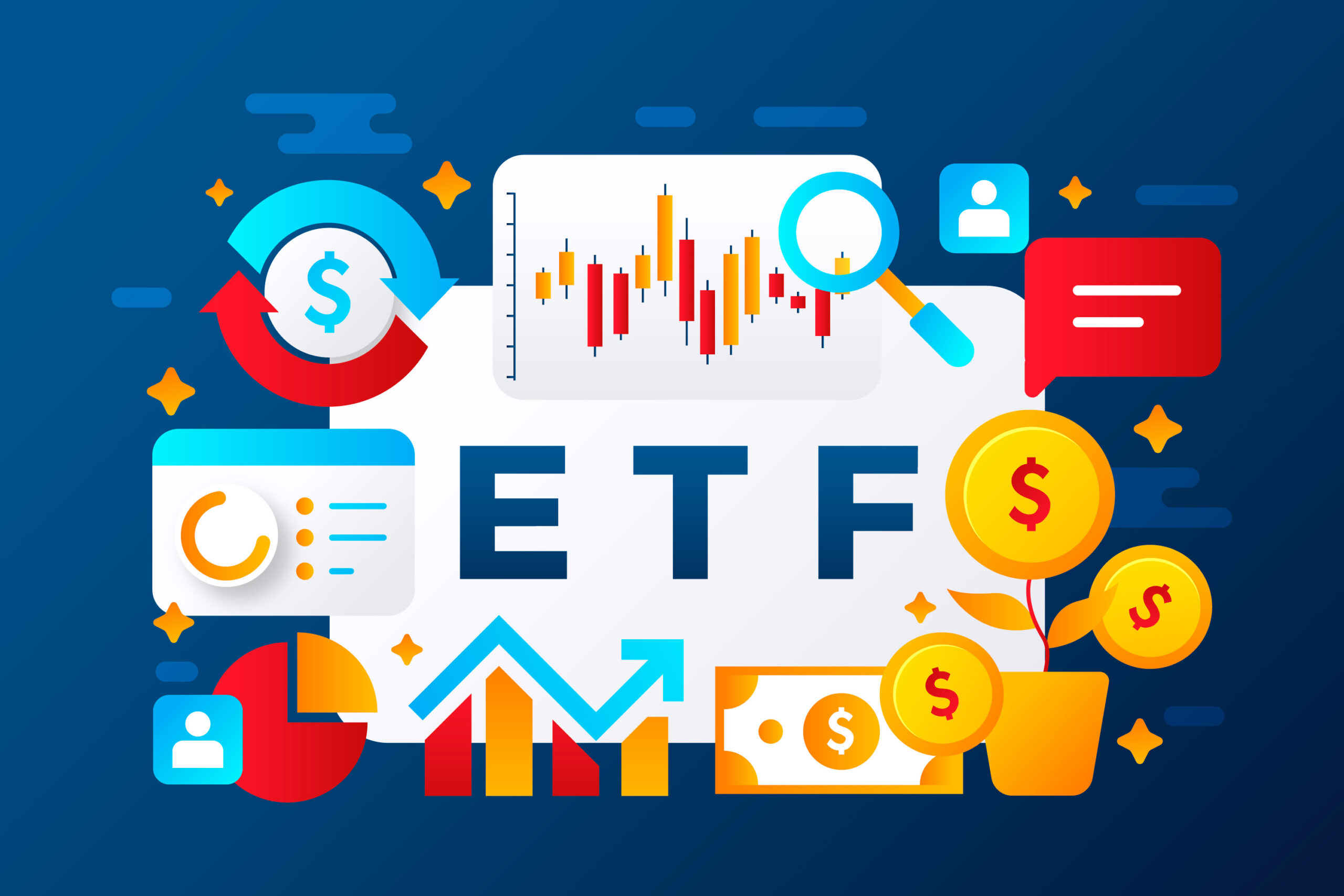Dividend Exchange-Traded Funds (ETFs) are popular investment vehicles for those seeking a steady income stream, particularly among retirees or investors focused on income generation. These funds are designed to invest in dividend-paying stocks and distribute the dividends to shareholders, offering a way to combine the benefits of dividend investing with the diversification and liquidity of ETFs.
What Are Dividend ETFs?
Dividend ETFs are a type of ETF that primarily invests in stocks of companies with a history of paying dividends. These dividends are typically paid out to investors on a quarterly basis, though some funds distribute them monthly or semi-annually. Dividend ETFs can be classified into two main categories:
- High Dividend Yield ETFs: Focus on stocks offering high dividend yields. These may include mature companies in sectors like utilities, consumer staples, and real estate.
- Dividend Growth ETFs: Focus on companies with a consistent record of increasing dividends over time. These are typically well-established, financially stable firms.
How Dividend ETFs Work
- Portfolio Construction:
- Dividend ETFs track specific indices or use proprietary strategies to select stocks based on their dividend characteristics.
- Common benchmarks include indices like the S&P 500 Dividend Aristocrats Index, which includes companies that have increased dividends for 25 consecutive years.
- Dividend Payouts:
- The dividends paid by the underlying stocks are pooled together and distributed to ETF investors.
- Some funds reinvest a portion of dividends to enhance growth.
- Management Style:
- Passive Management: Most dividend ETFs are passively managed, meaning they aim to replicate the performance of a dividend-focused index.
- Active Management: Some dividend ETFs are actively managed, where portfolio managers select stocks based on their judgment.
Advantages of Dividend ETFs
- Steady Income Stream:
- Provide a reliable source of income, ideal for retirees or income-focused investors.
- Diversification:
- Offer exposure to a broad range of dividend-paying companies across sectors and geographies.
- Cost Efficiency:
- Typically have lower expense ratios compared to actively managed mutual funds.
- Liquidity:
- Can be bought and sold like stocks during market hours, providing flexibility.
- Tax Efficiency:
- ETFs are generally more tax-efficient than mutual funds due to their unique structure.
Drawbacks of Dividend ETFs
- Interest Rate Sensitivity:
- Dividend-paying stocks, particularly in sectors like utilities, can be sensitive to rising interest rates. Higher rates might reduce their appeal relative to bonds.
- Limited Growth Potential:
- High dividend-yield stocks may have slower capital appreciation compared to growth stocks.
- Concentration Risk:
- Some dividend ETFs may have high exposure to specific sectors (e.g., financials or utilities), reducing diversification.
- Fees:
- While generally low, some dividend ETFs have higher expense ratios than broad-market ETFs.
Popular Dividend ETFs
Here are a few examples of well-known dividend ETFs, highlighting their characteristics:
- Vanguard Dividend Appreciation ETF (VIG):
- Focus: Dividend growth companies.
- Benchmark: NASDAQ U.S. Dividend Achievers Select Index.
- Expense Ratio: 0.06%.
- iShares Select Dividend ETF (DVY):
- Focus: High-yield dividend stocks.
- Benchmark: Dow Jones U.S. Select Dividend Index.
- Expense Ratio: 0.38%.
- Schwab U.S. Dividend Equity ETF (SCHD):
- Focus: Dividend-paying U.S. stocks with strong fundamentals.
- Benchmark: Dow Jones U.S. Dividend 100 Index.
- Expense Ratio: 0.06%.
- SPDR S&P Dividend ETF (SDY):
- Focus: S&P 1500 companies with 20+ years of increasing dividends.
- Expense Ratio: 0.35%.
Who Should Invest in Dividend ETFs?
Dividend ETFs are suitable for:
- Income-Focused Investors: Looking for regular cash flow, especially in retirement.
- Risk-Averse Investors: Preferring established, financially stable companies over high-risk, high-reward growth stocks.
- Passive Investors: Seeking exposure to dividend stocks without having to pick individual companies.
How to Evaluate Dividend ETFs
- Dividend Yield:
- Indicates the income generated relative to the ETF’s price.
- Higher yield isn’t always better; consider sustainability.
- Dividend Growth Rate:
- Look for ETFs investing in companies with a track record of growing dividends.
- Expense Ratio:
- Lower expense ratios mean more of your returns stay in your pocket.
- Sector Exposure:
- Ensure the fund’s sector distribution aligns with your risk tolerance and diversification goals.
- Performance History:
- Evaluate long-term performance to understand how the ETF performs across market cycles.
Tax Implications
Dividend income from ETFs is taxable, with rates depending on whether the dividends are qualified or non-qualified:
- Qualified Dividends: Taxed at a lower rate (0%, 15%, or 20%, depending on income bracket).
- Non-Qualified Dividends: Taxed at the investor’s regular income tax rate.
Conclusion
Dividend ETFs offer a convenient way to invest in income-generating stocks while benefiting from diversification, liquidity, and cost efficiency. They are an excellent tool for those looking to build a passive income stream or add stability to a portfolio. However, like any investment, it’s essential to align your choice of dividend ETFs with your financial goals, risk tolerance, and investment horizon.
